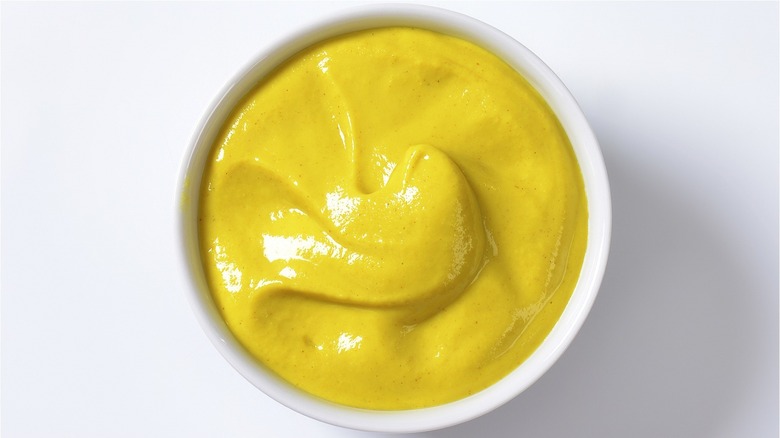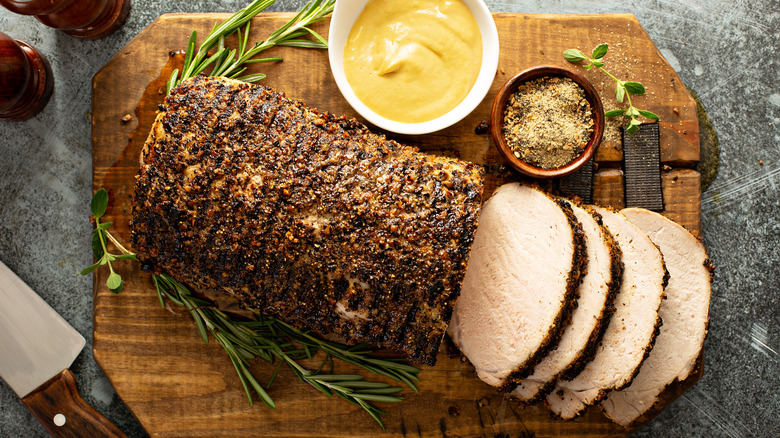How A Mustard Rub Can Take Meat Crust To The Next Level
It's impossible to mention mustard without debating its place on a hot dog. For some, mustard has become the high-brow condiment at barbecues, whereas ketchup is maligned for its high sugar content and overpowering flavor. Whether you're team mustard or ketchup, the yellow-hued pantry staple has many more applications in the kitchen beyond the humble meat tube.
Mustard is available as a seed, powder, or paste, ranging from mild yellow to pungent, sinus-clearing brown French-style mustard. The fat-free condiment is often enjoyed with salty, fatty meats like the annual Easter ham or cured meat on a charcuterie board. As an ingredient in recipes, mustard has a myriad of uses. You can mix up some honey mustard for chicken tenders, and add Dijon mustard as an emulsifying agent when making a vinaigrette. It provides a creamy viscosity to dressings without adding fatty dairy substitutes like sour cream.
Though burger chain In-N-Out has done it for years, some BBQ pitmasters are torn on using a mustard rub on meat. Traditional or not, however, there's no disputing that a mustard and dry rub coating on ribs or roast takes the meat's crust to the next level.
Mustard is the glue
Depending on the recipe, certain ingredients are used as binders to adhere spices and breadcrumbs to food like a flavorless glue. For example, beaten eggs are used in the three-step breading process in fried dishes like chicken Milanese. Mayonnaise is another neutral-tasting binder used when baking meat or delicate fish. Although effective, mayonnaise adds additional fat to the recipe since it's primarily made of egg and oil.
When it comes to barbecue, specifically when using dry rubs, yellow mustard is the preferred binder, whether you're smoking or slow-roasting. Per Barbecue FAQ, schmearing the meat with a thick layer of yellow mustard not only helps the dry rub adhere to the surface better, but the liquid in mustard activates the dehydrated spices and allows the rub to penetrate the surface of the meat, imparting more flavor and tenderness.
Made from vinegar, water, and spices like garlic, salt, and mustard seed, yellow mustard acts like a natural glue without altering the dish's taste or nutritional value. When cooked, the liquids in mustard (vinegar and water) evaporate, leaving behind trace amounts of spices — conveniently, these are often the same spices already being used in dry rubs.
Whether slow-cooking brisket, ribs, or grilling steaks, a tacky binder like mustard can truly make a difference. A coating of this yellow condiment creates a crust or "bark" that sets on the meat like armor, locking in the moisture and adding depth of flavor to the finished dish.

